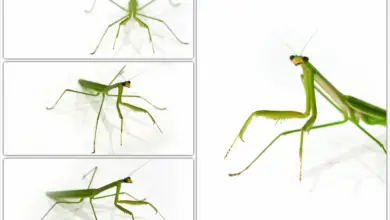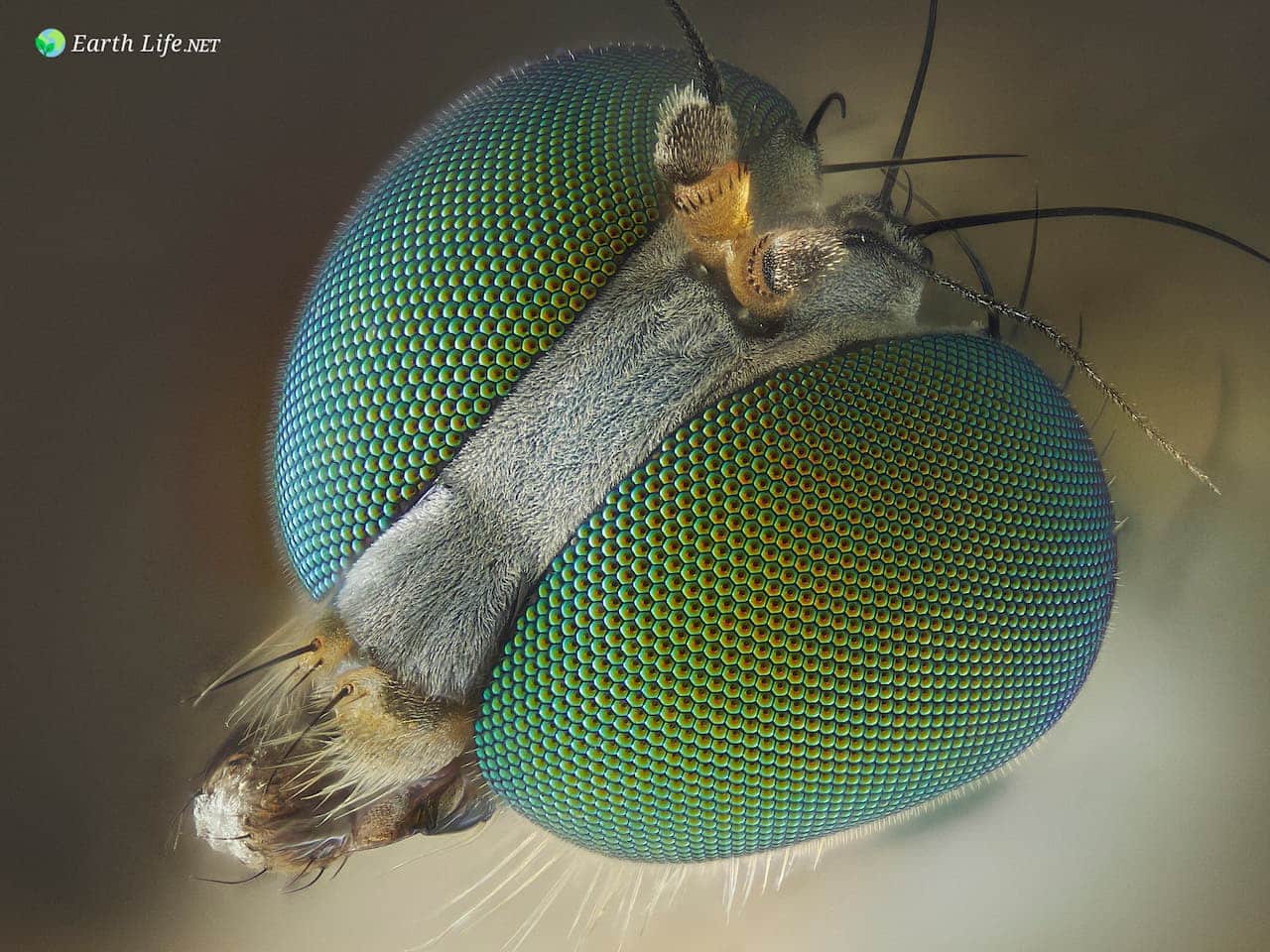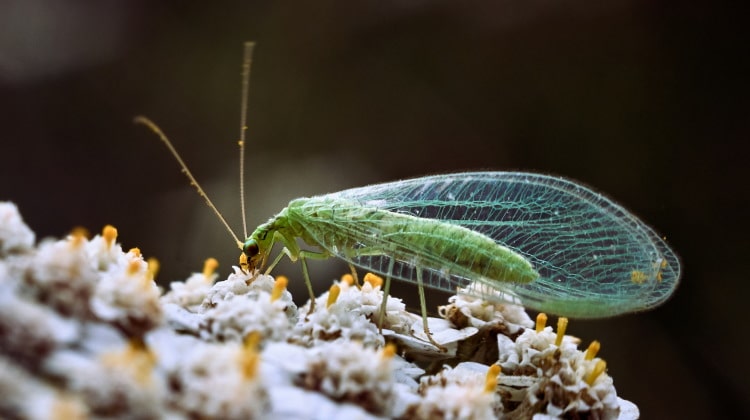Among the millions of remarkable adaptations that have enabled insects to thrive as the most diverse group of organisms on Earth, the ingenious design of their protective outer covering – the insect integument – stands out.
This complex, multi-layered exoskeletal system provides a tough external armor that shields soft internal tissues from damage while preventing water loss. Yet, it remains flexible enough for growth and movement.
Embedded sensory structures allow environmental perception. Diverse modifications equip insects for the demands of particular niches and lifestyles. The integument’s selective permeability and protective properties facilitated insects’ conquest of land.
Together with wings, this flexible, lightweight exoskeleton provided key evolutionary advantages that catalyzed insects’ unparalleled success and radiation into terrestrial, freshwater, and aerial realms.
Functions of the Insect Integument
The integument performs a diverse array of critical functions and roles:
Physical Protection
It forms a rigid external skeleton that protects the insect’s internal organs and tissues from mechanical damage and predator attacks.
Prevention of Water Loss
Its impermeable layers prevent excess water loss from insect tissues, helping them avoid desiccation.
Structural Support
It provides attachment sites for muscles, enabling insect movement and locomotion.
Sensory Perception
Sense organs like sensilla and compound eyes embedded within it allow sensory perception of the environment.
Storage Site
It stores substances like proteins, lipids, and pigments that enable rapid growth between molts.
Environmental Interactions
Features like setae, hairs, spines, and waxes modify integument interactions with the physical environment.
Communication Canvas
Coloration patterns, bioluminescence, and pheromone release allow social/sexual communication.
Defense
Spines, hairs, rock-hard plates, and chemical secretions provide defense against predators.
Buoyancy Control
Tracheal air filling and density of cuticle layers regulate buoyancy for aquatic insects.
The integument thus fulfills a diverse set of functions critical for insect survival. Next, we look closer at the layered structure responsible for these capabilities.
Layered Structure of the Insect Integument
The insect integument is composed of four primary layers, progressing from the outermost surface inwards:
- Cuticle – Tough external layer forming the exoskeleton
- Epidermis – Secretes cuticle components
- Basement membrane – Connects epidermis to underlying tissue
- Inner layers – Fat body, muscles, tracheae, etc.
Cuticle Layer
This tough, flexible, and impermeable outer layer provides the main barrier and protection.
It is secreted by the underlying epidermal cells and contains:
- Protein chains – Sclerotization and hardening
- Chitin fibers – Strength and structure
- Pigments – Coloration and patterning
- Lipids – Waterproofing
- Surface textures – Hairs, scales, grooves
Cuticle thickness, texture, and composition adapt to different insect environments and functional needs.
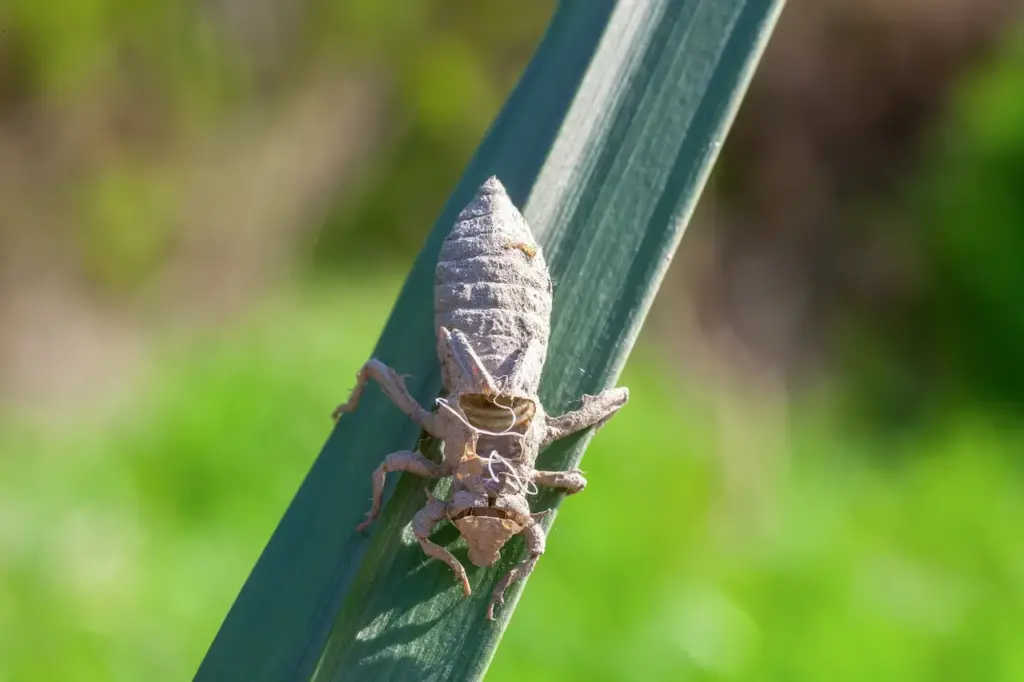
Epidermal Cell Layer
This cellular layer lies right beneath the cuticle and secretes the components that form the cuticle. Different specialized epidermal cells exist:
- Pore cells – Deliver cuticle proteins for secretion
- Sensory cells – Embedded sense organs like sensilla
- Gland cells – Produce waxes, pheromones, etc.
- Auxiliary cells – Support secretory function
The epidermis is a metabolically active secretory tissue that rebuilds the cuticle with each molt.
Basement Membrane Layer
This thin, non-cellular layer of proteins and polysaccharides attaches the epidermis to the underlying tissues. It provides structural continuity and communication between layers.
Inner Layers
Underneath the basement membrane lie tissues like blood vessels, tracheae, muscles, and fat body. The epidermis interacts closely with these tissues to coordinate cuticle function with overall physiology.
This layered architecture with specialized cells and secretions is key to the integument’s physiological integration and function.
Insect Molting and Growth
In order for insects to grow in size while confined within a rigid exoskeleton, they must periodically shed and rebuild their cuticular layers through a process called molting or ecdysis:
Molting Hormones
Molting is triggered by ecdysteroid hormones, which initiate a sequence of changes:
- Separation of the cuticle from the epidermis
- Digestion of old endocuticle
- Apoptosis of damaged epidermal cells
- Secretion of new cuticular layers
- Expansion and hardening of new cuticle
This hormonally mediated process enables insects to escape their constraining exoskeletons and continue growing.
Withdrawing Hemolymph
Prior to molting, insects withdraw hemolymph from their extremities, causing appendages to shrink back. This makes it easier to slip out of the old cuticle.
New Cuticle Secretion
While enclosed in the old exoskeleton, a new thin and flexible cuticle is secreted by the underlying epidermal cells. This preparation enables a rapid molt.
Emergence From Exuvium
Hydration causes the old cuticle to separate from the epidermis. Vigorous body movements help the insect wiggle out of this exuvium or cast-off layer, emerging with a larger but still soft new cuticle.
Expanding and Hardening
After molting, swallowing air and blood pumping rapidly expands the new cuticle to a larger surface area. Then sclerotization and dehydration harden the cuticle into a stiff protective exoskeleton again. This elegant molting process allows insects to grow and progress from juvenile instars to adult form.
Regional Specializations
While sharing an overall unity of structure, the insect integument adapts significantly to fulfill specialized functions in different body regions:
Head Capsule
This hard cuticular capsule protects the brain and sensory organs like antennae and eyes. Mouthparts like mandibles and maxillae are also heavily sclerotized.
Thoracic Region
Flexible intersegmental membranes allow movement. Leg joints have soft membranes for flexion, while cuticle plates reinforce the coxa and femur.
Wings
Extremely thin, flexible cuticle forms the wing surface for flight. Veins stiffen the structure. Special scales and hairs modulate airflow.
Abdomen
This region has a more flexible pleated intersegmental cuticle, which allows for distension and egg-laying. Sensory hairs are also abundant.
Genitalia
Complex species-specific cuticular structures like claspers aid reproduction. Contact sex pheromones are also secreted here. Different body regions thus modify the integumental layers to suit their specialized purposes.
Adaptive Structures and Features
Within the basic integumental theme, insects have evolved a diversity of special microscopic features and surface textures tailored for survival in their particular environment:
Coloration Patterns
Pigments embedded in the cuticle create colors for camouflage, warning displays, or sexual signaling. Some beetles have metallic gold layers.
Scales and Setal Hairs
Overlapping scales on moth wings diffuse predators’ attacks. Sensory hairs (setae) detect air currents, temperature, and chemical cues.
Wax Coatings
Microscopic waxes waterproof certain insects like cicadas. The lotus effect of textured waxes enables water repellency.
Spines and Spikes
Sharp cuticular spikes on insects like caterpillars deter predation. Some aquatic larvae have tracheal gills.
Plastrons
Microscopic hairs trap air bubbles on submerged insects, enabling underwater breathing of atmospheric oxygen.
Gland Pores
Pores allow the delivery of anti-predator chemical secretions. Milkweed beetles ooze toxic cardenolides.
Bioluminescence
Light-emitting phagocytes in firefly cuticles allow spectacular bioluminescent signaling.
Insect integuments have diversified extensively to equip species for the demands of their particular way of life.
Insect Integument Versus Vertebrate Skin
The insect integument and vertebrate skin, although both serving as protective outer coverings for the body, exhibit significant differences in their composition and functions. Vertebrate skin is a living multilayered tissue with the ability to absorb nutrients and produce glandular secretions like sweat and sebum.
Unlike insects, vertebrates do not require molting for growth; their skin provides continuous protection and support. In contrast, the insect integument is a non-living secreted cuticle that prevents water loss and serves as the structural basis of the exoskeleton.
Unlike vertebrate skin, the insect integument does not absorb nutrients and does not have glandular secretions. Instead, growth in insects occurs through molting, where the old cuticle is shed, and a new one is formed.
This fundamental contrast highlights the diverse demands faced by vertebrates and invertebrates, leading to distinct adaptations in their respective outer coverings: the metabolically active living covering of vertebrate skin and the physically protective non-living secreted layer of the insect integument.
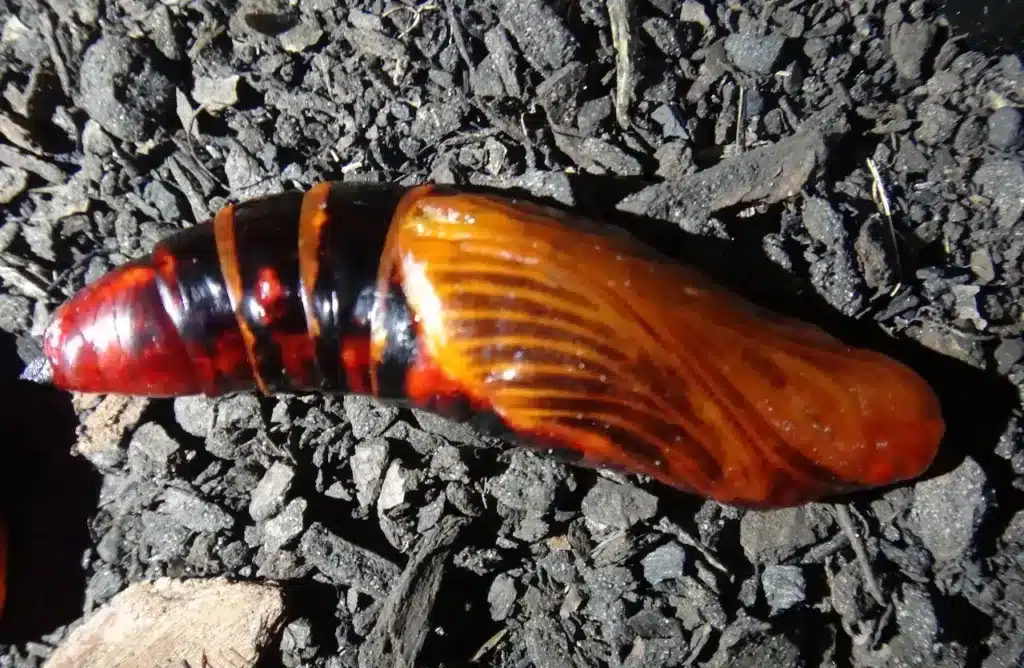
Evolutionary Success of Insects and Their Integument
Insects owe their astounding evolutionary success – representing 75% of all animal species – in large part to the beneficial adaptations afforded by their tough protective exoskeleton:
Diverse Habitat Radiations
The insect cuticle’s lightweight yet tough and flexible properties enabled insects to radiate into new aerial habitats through the evolution of wings and flight.
The exoskeleton provided attachment points for wing muscles and the ability to withstand the aerodynamic forces of flight. In addition, the waterproofing abilities of the integument allowed insects to adapt to aquatic habitats, while its soil-gripping textured surfaces enabled digging and burrowing species to inhabit underground niches.
Resilience
The ability to periodically molt and shed the exoskeleton allowed insects to repair any accumulated damage, replace worn cuticles, and escape from predators by slipping out of their grasp.
The cuticle’s damage tolerance and energy absorption properties also increased resilience against mechanical impacts and attacks. Even when damaged, it continues providing protection.
Adaptability
The layered structure and regional heterogeneity of the insect integument allowed diverse modifications and specializations to suit particular environments and functional needs. Leg textures could adapt for running vs. swimming vs. grasping.
Cuticle thickness and hardness adapted to different degrees of required armor. Setae and pores could be modified for improved sensory capabilities. This adaptability enabled diversification.
Waterproofing Barrier
The highly hydrophobic waxy layer coating the outer cuticle prevented desiccation by minimizing water loss through the integument. This allowed insects to adapt to dry air and terrestrial habitats, unlike aquatic arthropod ancestors restricted to aqueous environments. The ability to retain body water opened up vast new ecological niches on land.
Exoskeletal Strength
In contrast to vertebrates that must metabolically maintain internal skeletal bones, the insect cuticle provided an economical means of physical protection, support, and muscle attachment via an external tough, lightweight matrix deposited by the underlying epidermal cells. This cuticular exoskeleton enabled tremendous diversity in insect size and form.
Sensory Structures
The insect integument contains embedded microscopic sensilla hairs, pores, wax ridges, tympanal organs, and day/night-optimized compound eyes that provide nuanced environmental perception and cues for navigation, prey detection, mate finding, oviposition, and threat avoidance. This sensory augmentation allowed keen adaptation to ecological niches.
Diverse Defenses
Cuticular defenses like camouflage coloration, warning displays, body armoring, irritating hairs and spines, waxy coatings, and toxic secretions provided multi-layered anti-predator advantages. These adaptations increased insect survival rates in diverse ecological niches, improving success.
Disruptive Effects of Insecticides on Molting
Since molting is essential for growth, survival, and reproduction, it represents an Achilles heel that insecticides can target:
Inhibiting Molting Hormones
Insect growth regulators like tebufenozide interfere with ecdysone molting hormones, preventing larvae from shedding exoskeletons. This disrupts growth and metamorphosis.

Chitin Inhibitors
Diflubenzuron indirectly blocks the production of chitin, which is needed to build a new cuticle after molting. This causes larvae to get trapped inside old cuticles.
Cuticle Thickeners
Pyriproxyfen accelerates cuticle hardening and thickening, preventing the flexibility and distension needed for emergence from the exuvium after molting.
While molting enables insects to grow and adapt, it also creates a point of critical vulnerability that pesticides chemically disrupt.
Fat Body Functions and Role
The fat body, a vital metabolic tissue located beneath the basement membrane in insects, plays a pivotal role in their physiology. It maintains a close interaction with the insect integument and serves multiple crucial functions.
Firstly, it acts as a storage site for fat, carbohydrates, and protein reserves, ensuring a readily available energy source.
Additionally, the fat body synthesizes essential metabolites and proteins necessary for the insect’s biological processes. Moreover, it functions as a detoxification center, eliminating wastes and toxins from the insect’s system.
Furthermore, the fat body operates as an energy sensor and regulator of metabolism, maintaining balance and efficiency in the insect’s physiological processes.
Importantly, it coordinates molting signals with epidermal responses, facilitating the insect’s growth and development. One of its key roles is releasing proteins, metabolites, and signaling molecules that drive molting and cuticle synthesis in the epidermal layer.
Cuticular Hydrocarbons and Lipids
The outer waxy layer of the insect cuticle is composed of a diverse mix of hydrophobic lipids, including long-chain hydrocarbons, wax esters, and triglycerides.
These cuticular hydrocarbons play several vital roles in the insect’s life. Firstly, they form a waterproofing barrier, preventing desiccation by effectively repelling water.
Additionally, these hydrocarbons serve as chemical communication signals, enabling insects to communicate vital information to one another. They also possess anti-microbial properties, contributing to the insect’s defense mechanisms against harmful microorganisms.
Moreover, these lipids facilitate caste and nestmate recognition through species-specific blends, allowing insects to identify and interact with members of their own species effectively.
Furthermore, cuticular hydrocarbons are involved in mate attraction and courtship stimuli, playing a crucial role in the insect’s reproductive behavior. Beyond these functions, they help in maintaining thermal balance by providing insulation effects.
Mechanical Properties and Cuticle Engineering
The intricate microarchitecture of the insect cuticle offers remarkable mechanical properties that serve as a rich source of inspiration for materials engineering. One of its key features is the combination of high strength and stiffness, coupled with exceptional flexibility, a unique blend that has captivated researchers.
The cuticle’s layered design, accentuated by suture lines, ensures impressive damage tolerance, making it a robust and resilient structure.
Additionally, its viscoelastic nature enables efficient energy absorption, contributing to its outstanding mechanical performance. In fact, the cuticle exhibits a toughness level that surpasses synthetic equivalents by a staggering factor of 100.
Furthermore, the cuticle displays intriguing optical effects such as iridescence and anti-reflectance, adding to its multifaceted properties. Another noteworthy aspect is its dynamic tunability, achieved through moisture absorption in pore canals, allowing the cuticle to adapt to varying environmental conditions.
In response to these exceptional attributes, innovative manufacturing techniques are actively striving to replicate the stiffness, strength, damage tolerance, and moisture-responsive properties of the insect cuticle.
Beneficial Applications of Insect Integument Properties
Beyond insight into insect biology, we can translate some of the remarkable properties of insect integuments into beneficial technologies:
- Water-repellent coatings – Mimicking microscopic textures and waxes found on certain insect cuticles has enabled more water-repellent and self-cleaning synthetic surface coatings.
- Flexible composites – The intricate layered architecture of insect cuticles provides models for designing high-strength flexible composites for construction, armor, and automobiles.
- Anti-reflective materials – Moth eyes have nano-structured corneal surfaces that eliminate reflectance. Applying this to glass can improve light transmission for solar cells.
- Medical adhesives – Studying the mechanism of how maggots anchor to tissues could improve surgical adhesives and dressings.
- Optical sensors – Structural colors in beetle scales provide insights for manufacturing color-changing sensors that detect environmental changes.
- Biomimetic robots – The mechanical properties of insect cuticles and wings have inspired robotic joints, legs, wings, and grippers.
Studying insect integument gives us an abundance of bioinspired materials design opportunities appropriate for human innovations.
Conclusion
The insect integument represents a complex multi-layered exoskeletal covering that provides diverse physiological protective and adaptive functions critical for insect survival.
Its impermeable waxy layers prevent desiccation, while embedded sensory systems allow nuanced environmental perception. Region-specific modifications tailor their features for localized demands. Periodic molting enables escape from size constraints, allowing growth and development.
The insect cuticle’s unique architectures, surface patterns, and material properties have made it a subject of intense interest for biomimicry applications. Together with wings, the insect integument provided key evolutionary adaptations that helped catalyze insects’ tremendous species diversification and ecological success.



